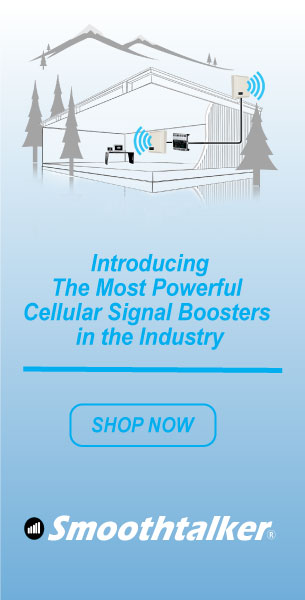
Debunking 3 Common Myths About Cell Phone Signal Boosters
In an age where connectivity is key, cell phone signal boosters have emerged as a popular solution for combating poor cell coverage or reception and dropped calls. However, despite their effectiveness, several myths continue to circulate about these devices. Let’s debunk three common misconceptions surrounding cell phone signal boosters.
Myth 1: Cell Phone Signal Boosters Are Illegal
One of the most prevalent myths surrounding cell phone signal boosters is the belief that they are illegal to use. This misconception likely stems from uncertified poor performing cheap imports. It’s true that there are many cheap imports on the market that are not certified and cause much grief and noise to the cellular networks. These are huntered down by the cellular carriers and seized. There are detailed regulations in place by regulatory bodies like the FCC (Federal Communications Commission and Industry Canada).
These regulations include rigorous testing procedures that a cell phone signal booster must pass/meet in order to be able to be sold and operate inside the Licensed Radio Spectrum. Certified licensed boosters are designed to comply with these regulations and not interfere with wireless networks, and ensure they operate within legal parameters.
Manufacturers must obtain FCC certification for their products, indicating that they meet the necessary technical standards and do not cause harmful interference. Consumers can easily identify FCC or ISED certified boosters by looking for the certification approval numbers on the device or its packaging.
It’s important to note that using uncertified or improperly installed signal boosters can indeed cause interference and may be subject to serious legal consequences. However, when used correctly and with FCC and ISED certifications, cell phone signal boosters are perfectly legal and safe to use.
Myth 2: Cell Phone Signal Boosters Can Create Signal Out of Thin Air
Another common mystery is how cell phone signal boosters magically create a signal where none exists. In reality, they do not create the receive signal but while your cell phone might read “no service”, there might actually be some signal there that is able to be picked up by the cell phone booster antenna. This signal is then amplified by the signal booster and brought to your cell phone or cellular device. Signal boosters work by amplifying existing signals that are weak or degraded due to distance from cell towers, obstructions, or building materials. The signal booster also takes the phone’s weak TX signal and amplifies it back to the cell tower clearly and with many times the power of your phone, enabling a reliable solid connection.
Signal boosters consist of three main components: an outdoor antenna, an amplifier, and an indoor antenna. The outdoor antenna is mounted outside the building where it can receive the strongest available signal. This signal is then transmitted via cable to the amplifier, which boosts the signal’s strength. Finally, the indoor antenna broadcasts the amplified signal within the vehicle or building, providing improved coverage for cell phones and other wireless devices.
As we have said, while signal boosters can significantly enhance signal strength and improve reception, they are not capable of generating signals where none are present. Therefore, it’s essential to position the outdoor antenna in an area where some small amount of signal is available, even if it’s weak, to ensure the booster can effectively amplify it. The higher the quality of the signal booster, the better the sensitivity of the booster which is like super hearing or the ability to hear even the faintest cellular tower signal.
Myth 3: Cell Phone Signal Boosters Are Complex and Difficult to Install
Some people may be deterred from using cell phone signal boosters due to the misconception that they are complex and difficult to install. However, modern signal boosters are designed with user-friendly installation in mind, and many can be set up with minimal technical expertise.
Most signal booster kits come with straight forward installation instructions, and many manufacturers provide online resources, videos, and customer support to assist with the process. Typically, installation involves mounting the outdoor antenna in a suitable location, connecting it to the amplifier, and placing the indoor antenna in the desired coverage area. Depending on the specific setup, additional steps such as adjusting antenna positioning or configuring settings may be necessary.
Additionally, there are different types of signal boosters available to suit various environments and requirements, including options for residential, commercial, and vehicle use. Whether you’re boosting signals in your home, office, car, truck, RV, or boat, there’s likely a signal booster solution that’s easy to install and meets your needs.
In conclusion, cell phone signal boosters are a reliable and effective solution for improving signal strength and reducing dropped calls. By debunking these common myths, we can better understand the capabilities and benefits of cell phone signal boosters and confidently utilise them to enhance our connectivity experience. With proper installation and compliance with regulations, signal boosters can provideseamless communication wherever you are.
What kind of booster do you need? We can help! Simply fill out our Free Site Review Signal Analysis, and Booster Recommendation form here. At Smoothtalker, we’ve been manufacturing pro-grade intelligent fully automatic cell phone signal boosters for over 24 years. If you have a question, you can call us at 1-877-726-3444 or email info@smoothtalker.com.


